
Bagan
In Bagan, the mystifying and ancient city with thousands of pagodas, it is hard to look any direction without taking sight to some sort of ancient building. The vast openness of the land will take your breath away. You can almost feel the holiness of this place as you are surrounded by earth colored temples and open farmland. Located along the grand Ayeyarwaddy River, Bagan is a cultural and historical treasure located in the heart of Myanmar.
The temples and pagodas of Bagan can be dated from the 11th and 12th centuries. This city was once called “the city of four million pagodas,” and still to this day Bagan is the world’s largest area of temples, pagodas, stupas and ruins. The exact number of temples and ruins varies depending on what is considered a temple or ruin, but the number ranges from 2,200 to 4,000. You can easily consume three or four days here wander in the awe inspiring ruins of Bagan.
Frequently asked questions
NyaungU
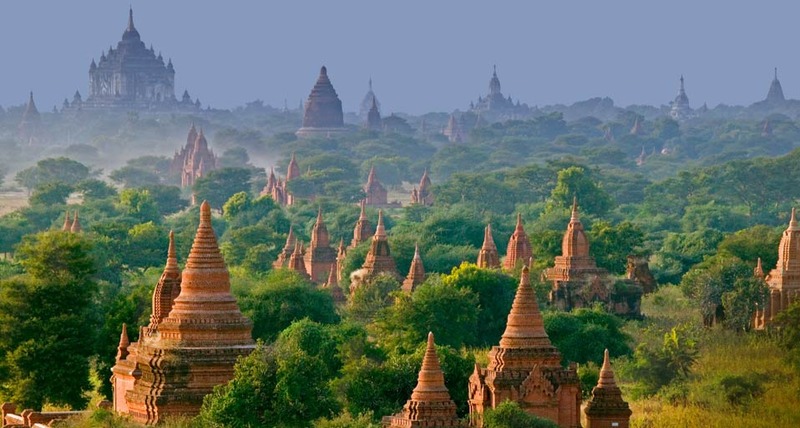
For breakfasts, if you’re not quite ready for noodle soup in the market, then smart Cafe Bagan on the market roundabout is a great spot to start your day. It’s actually one of the rare air-con eateries in town, so it’s good at any time of the day, but for breakfast they offer freshly brewed coffees and squeezed juices plus a good array of bakery items. For lunch or dinner they have – even for Bagan – an astonishing variety of international classics including Malaysian laksa, chicken tikka, fish and chips, sandwich and burgers as well as rice and noodle dishes.
In a town where most restaurant menus include a bit of everything, Shwe Moe was our favourite jack-of-all-trades spot. Their food isn’t necessarily better than anywhere else’s but the family owners are super friendly; it’s a good spot to sit and watch Nyaung U go by and their awesome aubergine tempura goes down great with a cold beer at the end of a hot day’s temple-hopping.
A favourite is the aptly named Wonderful Tasty. This very basic, straw-roofed shack with a few outdoor tables is located down the Main Road end of the row. Food is authentic Burmese/Indian but service is a compromise, so you won’t get all the miscellaneous free side dishes while portions are much larger than usual.
Next up, on the same side, is Weather Spoons. No, the cheap and nasty UK pub chain hasn’t moved in to Bagan yet, but a Burmese lad’s amusingly copied the name and it’s fast becoming a Nyaung U backpacker institution. Decor is basic with a packed seating area under an open-sided wooden roof and a graffiti-scratched wall. Food is a bit of everything but expats and regulars swear they serve the best burger in Bagan, at 4,900 kyat.
The best of Bagan 3 days
Day 1: Bagan
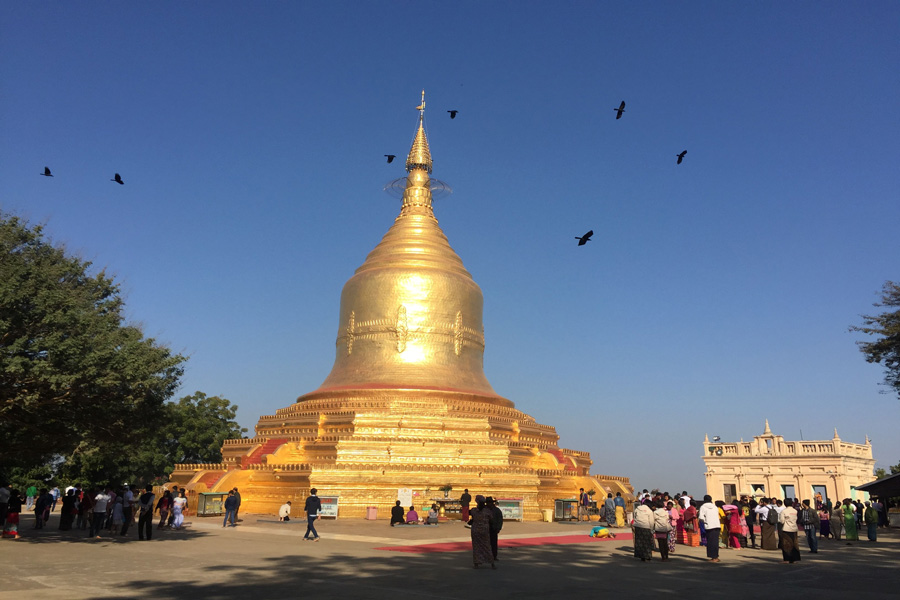
Head out to visit Lawka Nanda Pagoda: This magnificent golden structure is located right next to the Irrawaddy River and is the popular subject of worship for many locals around the area. You’ll find many improvised stalls on the way up, a feature of most well-known temples in Bagan.
Bagan Archaeological Museum: The Bagan Archaeological Museum gave us an insight into the city’s history, languages, religious evolution, and even the hairstyles that were trendy in previous centuries. We recommend this as one of your first stops to provide context of cultural heritage you will come across during your time here.
Ananda Temple: This particular temple was built by a king who ordered its architects executed as well. The reason? He didn’t want anything else like it to be built anywhere else — and it worked. The complex is shaped like a Greek cross and its structures are wonderfully preserved till today.
After lunch, you will visit Shwesandaw Pagoda, A majestic pagoda made up of five terraces leading up to a small golden stupa above. It is now forbidden to climb up its inviting staircases, but makes for intriguing viewing nonetheless.
Shwegu Gyi Phaya: Covered in riveting shades of raven black, the Shwegu Gyi is an odd gem compared to its shiny golden friends. Get your face painted with thanaka (a traditional Burmese cosmetic) for free, and buy custom-made lacquerware from locals who have set up shop here.
Day 2: Off the Beaten Track
Get ready for a long day ahead, as we’ll be venturing into more exciting, off-beat places further away from the cluster in Old Bagan. From here on, some pagodas will only have numbers and coordinates attached to them as they don’t currently have a name.
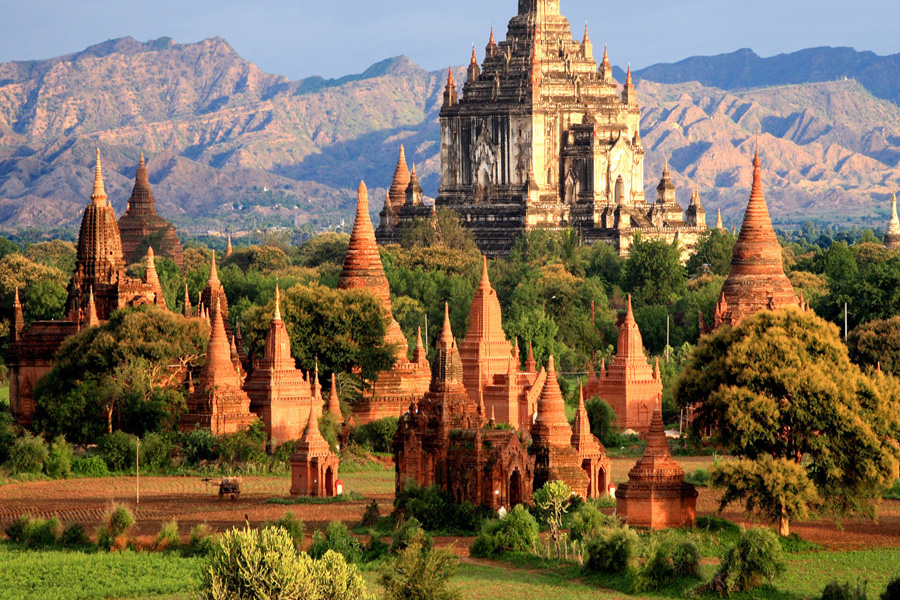
Sunrise at Ta Wet Hpaya: The sun rises early at 5:55AM in Bagan (April 2019), so the true golden hour to catch its ascent is at about 5:30AM. Get up early and make your way to Ta Wet Hpaya to witness one of the most glorious sights there is — an amazing combination of hot air balloons rising over the horizon in perfect tandem with the amber glow of the sun. You could stay here for at least an hour, taking pretty portraits underneath a picture perfect sky.
Pagoda 761: As we were leaving Ta Wet Hpaya, several clear paths of sand to our left led towards an enticing entrance to this cluster of pagodas. Biking through the large clearing leading up to these structures felt as if we’ve chanced upon an undiscovered village.
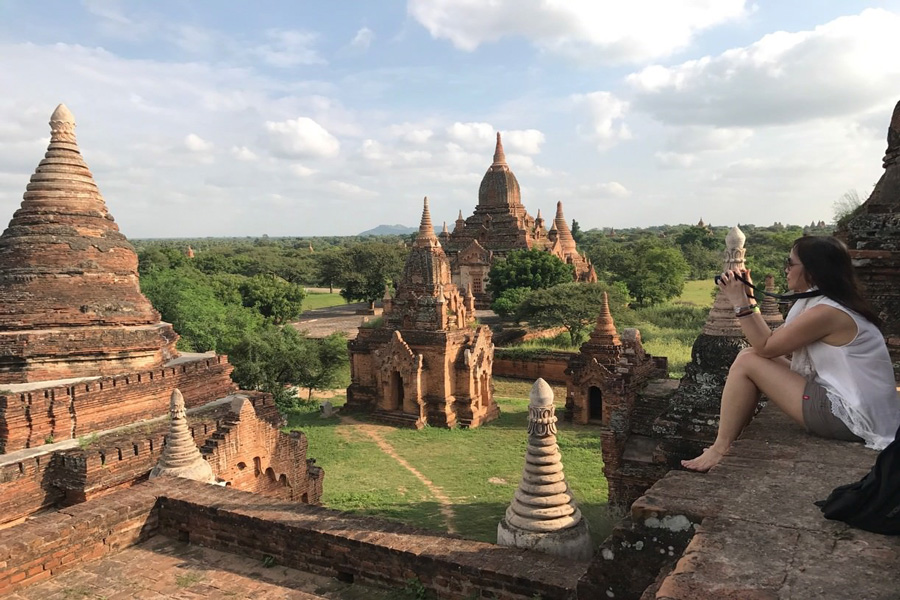
Winido Temple: Winido is actually a congregation of several small, but delightful temples. Its interior contains impressive paintings that date back to the late period of Bagan.
After lunch, visit to Lemyethna Temple, is also known as the Temple of Four Faces. Resting on a platform, it’s decked out in pure white and decorated with bits of gold tips. You’ll also be able to find remnants of ancient Buddhist stories inside.
Shwezigon Pagoda: The Shwezigon Pagoda may be someways off Old Bagan, but it’s certainly one of the most sacred places in the city. The entirely gold-plated temple houses many precious Buddhist relics and is an important pilgrimage site. In December, thousands of devotees flock to Shwezigon to pay respect to the Nat spirits believed to reside here.
Day 3: Finding Hidden Gems
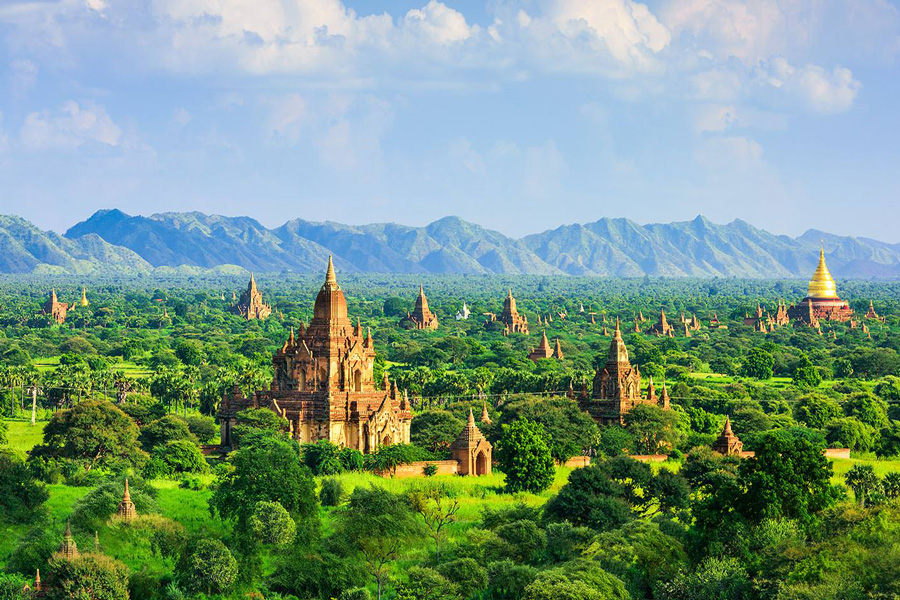
When it comes to locating places that are fascinating and not already hogged by tourists, sometimes the best way is simply to follow the advice of those who live there. Day 3 is all about the less-frequented, but nonetheless charming sights Bagan has to offer.
Sunrise at Pagoda 669: Whilst we were frantically scampering around on our bikes looking for an ideal spot to capture more picturesque shots of the morning sun, a young Burmese man caught up beside us and asked if we wanted him to show us a secret place. Although skeptical, we lacked a better plan, and agreed for him to take the lead. True to his word, he led us to this uninhabited pagoda with a great view far from anyone else.

Htilominlo Temple: The Htilominlo Temple was named after the King who built it, and it stands three storeys high on the spot where he was chosen to be the successor of the throne. The terraces used to contain images depicting stories of the various lives of the Buddha, until an earthquake consigned them to the past.
Alotawpyae Pagoda: Unlike most of the other pagodas you’ll encounter, the Alotawpyae Pagoda tends to be occupied by monks and other devotees performing their prayers. It’s an interesting glimpse into the life of a local.
Myazigon Pagoda: This pagoda is quite the beauty. Though relatively short, the three short flights of white stairs surrounded by its protective guardians on each side serve as a flawless base for its golden stupa centrepiece.
Dhammayangyi Temple: The uncompleted Dhammayangyi Temple is the largest of them all here in Bagan. The story goes that King Narathu had attempted to build a humungous temple to make up for the bad karma he gained from killing his father and brother to take the throne, although we’re not sure it works that way.
Bagan
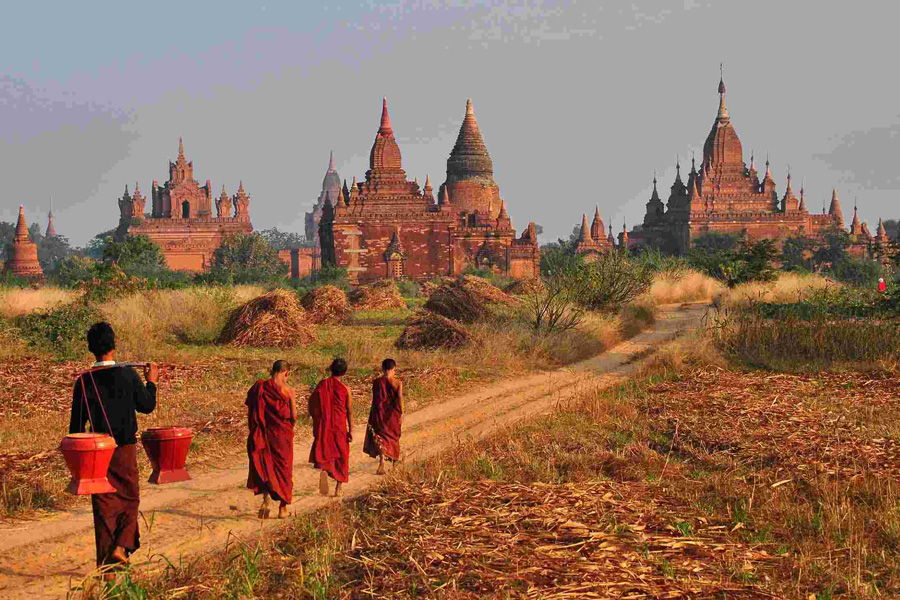
In Bagan, the mystifying and ancient city with thousands of pagodas, it is hard to look any direction without taking sight to some sort of ancient building. The vast openness of the land will take your breath away. You can almost feel the holiness of this place as you are surrounded by earth colored temples and open farmland. Located along the grand Ayeyarwaddy River, Bagan is a cultural and historical treasure located in the heart of Myanmar.
The temples and pagodas of Bagan can be dated from the 11th and 12th centuries. This city was once called “the city of four million pagodas,” and still to this day Bagan is the world’s largest area of temples, pagodas, stupas and ruins. The exact number of temples and ruins varies depending on what is considered a temple or ruin, but the number ranges from 2,200 to 4,000. You can easily consume three or four days here wander in the awe inspiring ruins of Bagan.
The temples are not the only sight to see in Bagan. This town is culturally rich and we want to show you that. The vast farmland occupied by local farmers is rather impressive. Their ox drawn wagons and farming equipment is that of the past, and the people of this land have used these techniques for ages. It is really something to see the acres of farmland scattered between ancient temples. To really enjoy yourself, hire a bike and take a ride throughout the rural countryside. You can go off the beaten path to explore the area on your own and climb the narrow stairways of the temples to get a real sense of these mystifying structures.
There are many different ways to enjoy the city of Bagan. You can take a pony cart ride that will take you up and down the back alley ways of the city. You can stroll the open land by foot and explore the temples at your own pace. Hire a bike and tackle the semi desert land while peddling your way down dusty roads. If your feeling a little tired and don’t want to break we will take you by air-con car to each of the destinations you choose. For a real treat make reservations to soar over Bagan with the birds in a hot air balloon. No matter which way you choose to explore this ancient city we assure you won’t be disappointed.
One of the main highlights of Bagan is the sunset. Each night the earth colored temples seem to glow as they reflect the deep red sunset. We will take you to the top of a tall pagoda where you can go back in time as the sun sets behind the mountains that sit along the river. Just relax and breathe the fresh air as the thousands of temples vanish in front of your eyes. It is truly one of the best sunsets you can enjoy within Myanmar.
Mt Popa
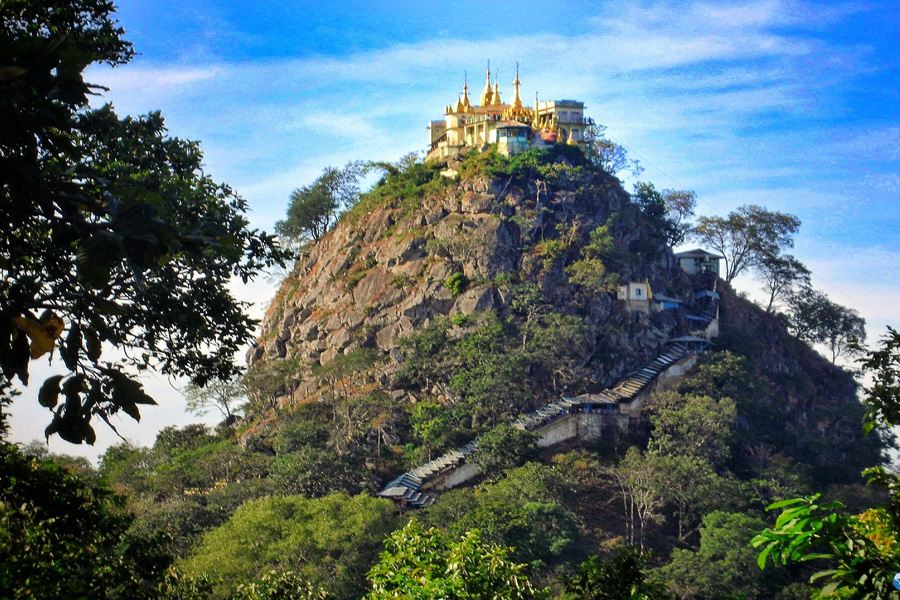
Popa is about 50 kilometers from Bagan. Popa region is situated in Kyaukpadaung Township, Mandalay Division, in the central part of the country. Mount Popa is also known as an extinct volcano and the adobe of the 37 spirits. The Mount Popa is a distinctive mountain in this region. It is an old volcano forming the northern offshoot of the Bago Yoma mountain range, occupying the lower central region. The mountain is 4900 feet high above the sea-level. From the Ayeyarwaddy River, it is about 65 kilometers away.
Salay
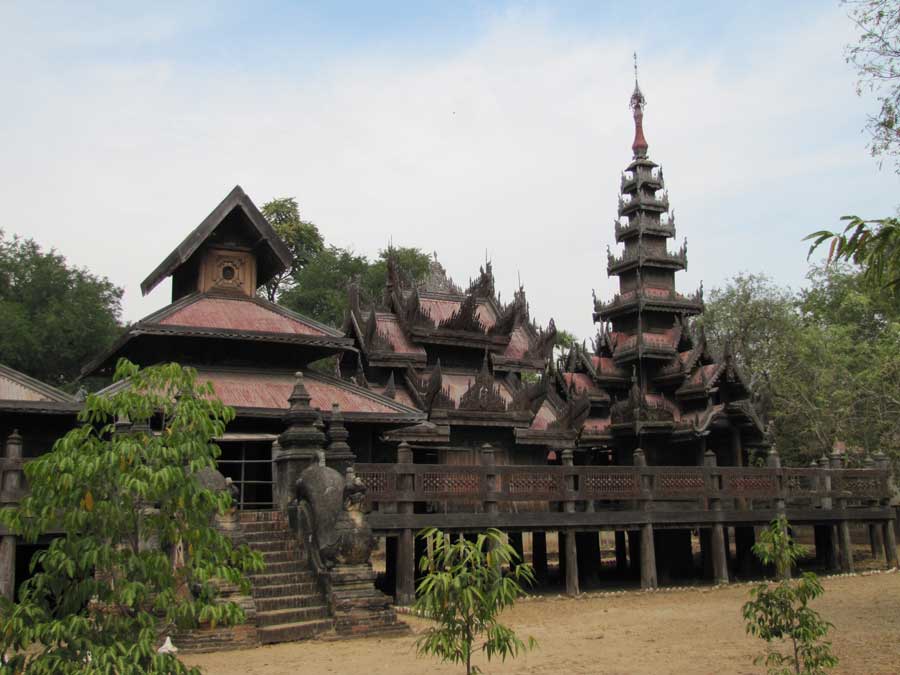
Salay is about 120km from Bagan to the south. Kyauk Padaung and Chauk are the towns on the way to Salay from Bagan. It is a day-trip from Bagan. Salay is a popular place in Myanmar because it is the historic home of the famous Salay U Ponya, a Bagan Era writer/poet whose work are well-known all over the country.
The major attraction is the Yokesone Kyaung – It is a 130 years old monastery with lots of Myanmar handicrafts and sculptures. Therefore known as Yokesone meaning “Many figures”. The jatakas (the stories of Lord Buddha) and Ramayana tales are described in wooden sculptures.
The best time to visit Bagan
Overall Bagan Travel Experience by Season
Spring (March through May)
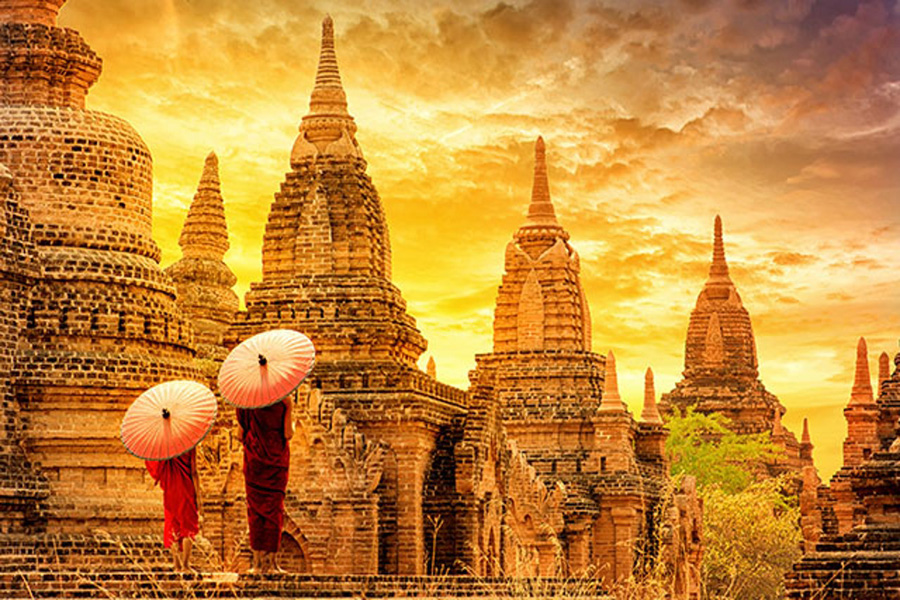
Humidity and temperatures combine to make this season feel very warm. Highs range from 105.1°F (40.6°C) and 98.5°F (36.9°C) with warmer temperatures in the later months. Rain is nonexistent with roughly 0 days of significant precipitation per month. Spring is the busiest for tourism, which makes it a good time for those looking for things to do.
Summer (June through August)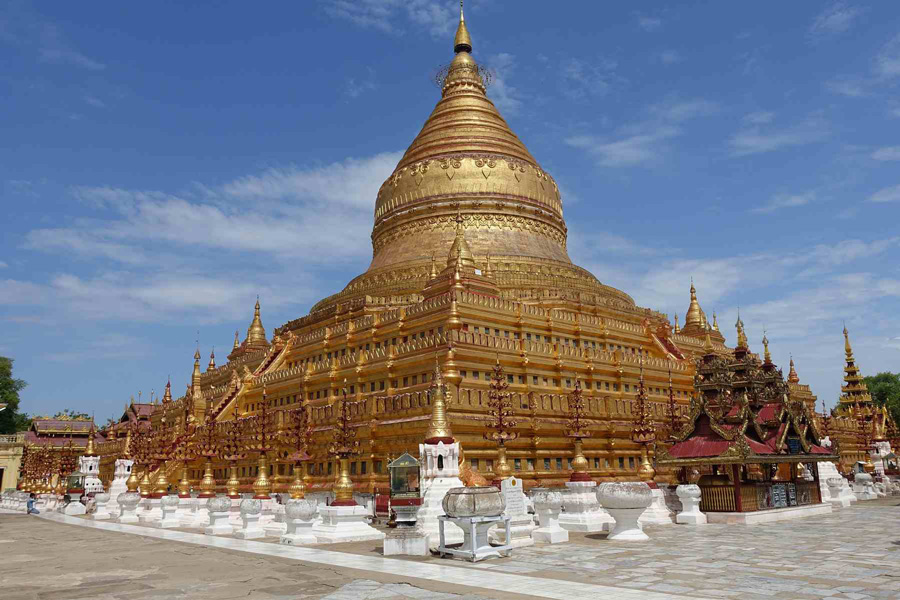
The middle-year months have hot weather with high temperatures that are quite warm. These months see the most precipitation with 0 to 1 days of precipitation per month. June – August is the second busiest season for tourism in Bagan, so lodging and other accommodations may cost slightly more.
Fall (September through November)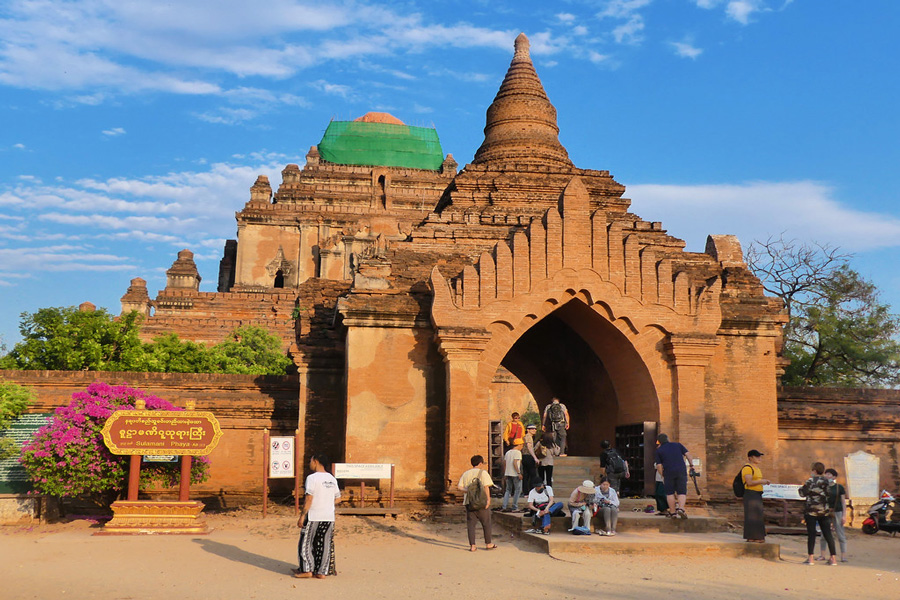
Fall daily highs range from 93.4°F (34.1°C) and 89.1°F (31.7°C), which will feel very nice given the humidity and wind. It rains or snows a barely noticeable amount: 0 to 1 days per month. Tourism is the slowest during these months due to the weather, so hotels may be affordably priced.
Winter (December through February)
Weather is perfect this time of year in Bagan to be enjoyable for warm weather travelers. The average high during this season is between 98.5°F (36.9°C) and 83.5°F (28.6°C). On average, it rains or snows a insignificant amount: consistently 0 times per month. These times of year are fairly slow with tourists.
Throughout this article, we wish you to have an idea of how to travel to Myanmar for your best experience. In case you are looking for your own travel agent, who can offer a wonderful and hassle-free trip to Myanmar, please feel free to let us know. We always commit our best to make it your once-in-a-lifetime journey.
You may also like
Highlights of Myanmar 10 Days
- Depart Time:Daily
- Starts/Ends:Yangon/Yangon
- Tour type:Private Tours
- Travel Style:Family Tours, Culture & History
- Activities:Local culture tours, Cultural, religious and historic sites tours, Countryside and village visits tours
- Suitable for:Solo, Family, Group, Couple
- Age range:1 To 90 Years
- Operated in:English, French, Spanish, German, Italian
 France
France  Spain
Spain  German
German  Italian
Italian 


 Vietnam Tours
Vietnam Tours  Cambodia Tours
Cambodia Tours  Myanmar tours
Myanmar tours  Thailand Tours
Thailand Tours  Laos Tours
Laos Tours